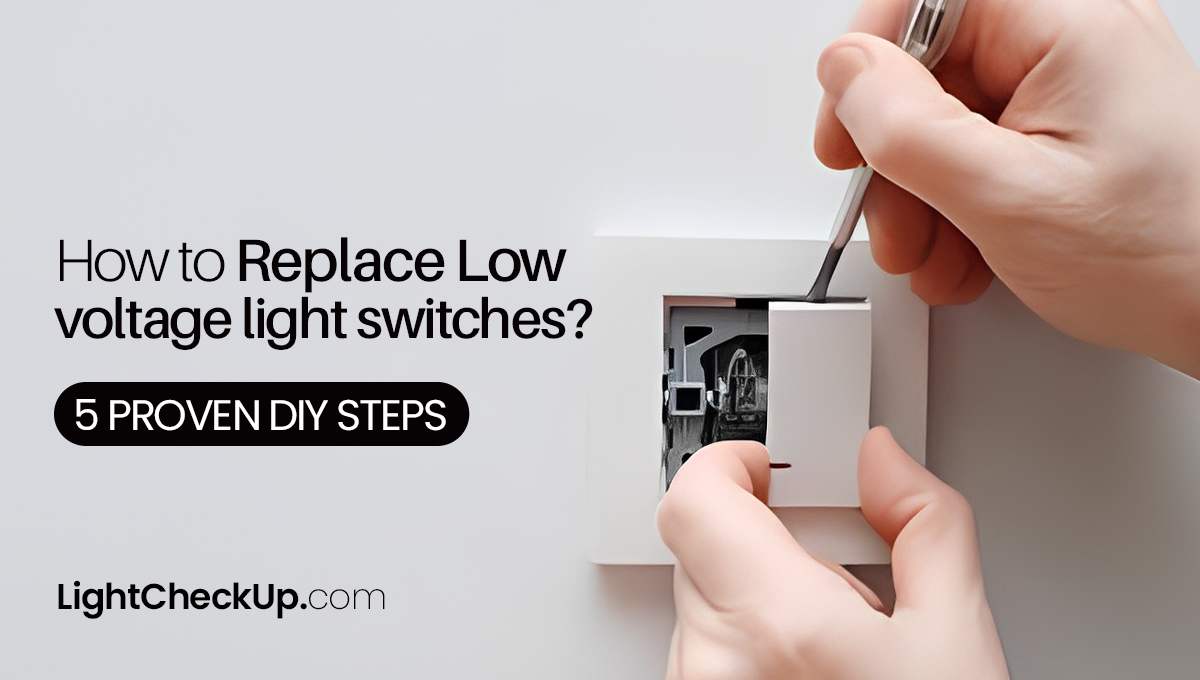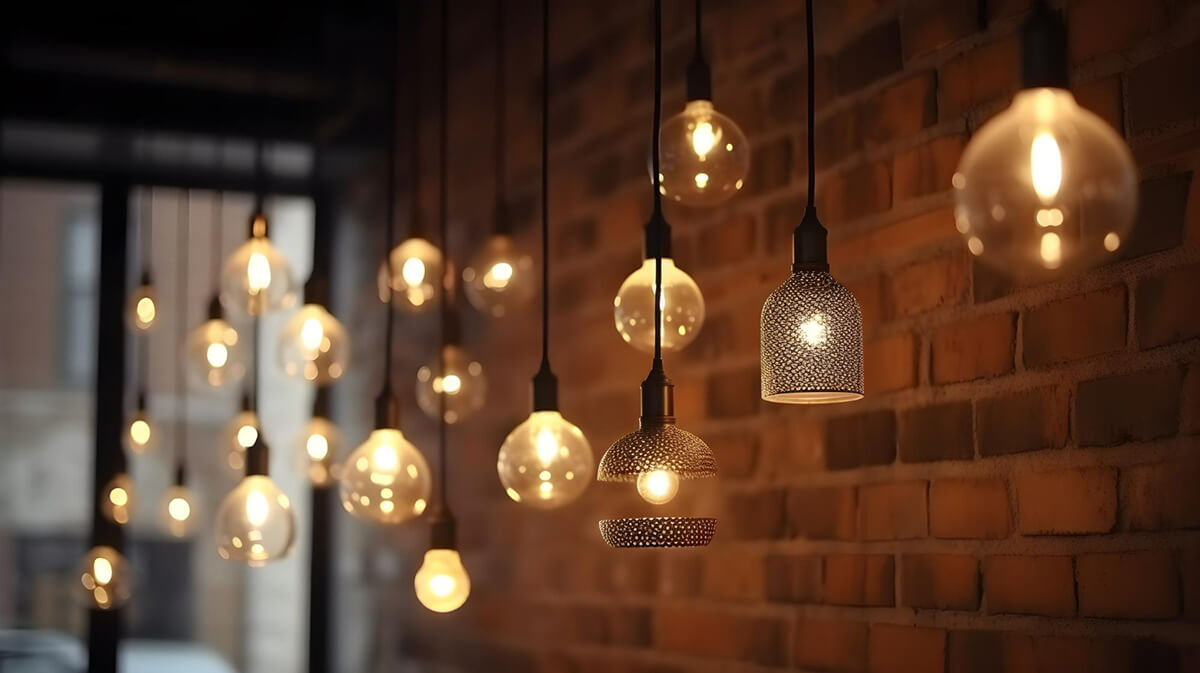Flickering or uneven lighting in your home or office? That can be a signs of bad ballast. Ballasts are necessary for fluorescent lighting systems to control bulb current. Without it, bulbs won’t work.
In this article, we’ll cover the terrible signs of bad ballast symptoms and how to spot them. A step-by-step guide to multimeter testing ballast operation, safety measures before testing, and probable ballast failure causes will also be provided. These symptoms of a faulty ballast should be replaced immediately to avoid safety issues and expensive repairs.
Understanding what a ballast does
An effective lighting system requires a functioning ballast. Ballasts control current and supply voltage to light bulbs, ensuring that they function at maximum brightness. However, a bad ballast can cause flickering or inconsistent lighting, as well as burn marks or excessive heat. Don’t ignore buzzing or flickering lights, as they could be a sign of a bad ballast.
If you suspect a problem, the next step is to replace the ballast with a new one, whether it’s an electronic or magnetic ballast.

signs of bad ballast
Signs of bad ballast in lighting systems
Ballasts play a vital role in lighting systems, controlling the electrical current in fluorescent bulbs. They provide the right amount of voltage for optimal performance, ensuring full brightness.
Without a ballast, the light bulb won’t work at all. A bad ballast can cause flickering or no light, indicating the need for a new ballast. Ballasts keep fluorescent lights working and last longer by regulating voltage and current.
So, if you notice any signs of a bad ballast, the next step is to replace it with an electronic or magnetic ballast.
6 symptoms of bad fluorescent ballast failure
When lights flicker, it means the fluorescent ballast is broken. Burned-out bulbs may indicate signs of bad ballast. A malfunctioning ballast may cause fluorescent lights to change color. Faulty ballasts cause inconsistent illumination, delayed start-up, and low output in fluorescent bulbs.
Flickering Light
Flickering lights may be annoying and suggest a signs of bad ballast. If a ballast isn’t working right, lights might flicker, which could affect how bright they are. This is particularly worrisome in safety-critical lighting regions. Flickering lights must be addressed immediately to avoid ballast damage. You may retain full light brightness and prevent safety issues by doing so. If needed, replace the ballast.

Bulbs look burned out.
Burned-out bulbs may indicate a defective ballast. A faulty ballast or signs of a bad ballast may prematurely burn out bulbs. It also causes scorch marks or discoloration. If you find yourself repeatedly replacing burned-out bulbs, it may indicate a faulty ballast. Check the bulbs for damage to determine if the ballast is to blame.
Changing colors
It might be a signs of bad ballast if you notice the color of the light coming from your fluorescent bulbs changing. A faulty ballast can cause the light to appear dimmer or have a different hue, which can affect the ambiance and functionality of a space. It’s important to identify and address the cause of changing colors to maintain proper lighting conditions.
Inconsistent lighting levels
Lighting issues can ruin a room’s atmosphere. It may also affect productivity and visual comfort. These irregularities in illumination are often indicative of a faulty ballast or signs of bad ballast. A defective ballast may produce flickering or fading lights. To build a more pleasant atmosphere, quickly discover and fix irregularities. This will increase illumination and avoid ballast damage.

signs of bad ballast
Delayed start
If you notice a delay when turning on the lights, it could be a signs of bad ballast. A faulty ballast can cause a delay in activating fluorescent lights, which can be inconvenient and disrupt daily operations. To maintain a reliable lighting system, it’s important to address the cause of the delayed start. If the ballast needs replacing, professional help is available. Don’t hesitate to take the next step in resolving this issue for a brighter and more efficient lighting experience.
Low output
If you notice reduced brightness or low output from your fluorescent lights, it could be a signs of bad ballast. A failing ballast can result in diminished light intensity, impacting visibility and overall lighting quality. A well-lit room is essential, so identify and fix low-output concerns. Experts can help determine whether ballast is the problem and what to do next. Full brightness is essential!
Testing ballast function with a multimeter
Testing the function of a ballast can be done using a multimeter. You can identify ballast issues by checking voltage and resistance. If you notice flickering lights or reduced brightness, a multimeter test can help pinpoint the problem. This test can tell you a lot about the health of the ballast, so it’s essential. Be careful and take safety precautions throughout the process.

bad ballast
How to Use a Multimeter to Diagnose a Suspect Ballast
Before testing the ballast, make sure the fixture is powered off to avoid any electrical accidents. For safety purposes, remove the fluorescent bulbs from the fixture.
Next, disconnect the ballast from the wiring. Then, remove the ballast cover to access the electronic ballast.
Now comes the crucial step: use a multimeter to test the ballast’s electric current. This step-by-step guide will help you identify any potential issues with your suspected ballast without risking your safety.
Step 1: Power off the fixture.
Before working on the fixture, emphasize safety. To prevent electrical shocks, switch off the power. Turning off the power or disconnecting the fixture does this. These basic actions create a safe atmosphere for inspections and maintenance. Take safety first!
Step 2: Remove the fluorescent bulbs from the fixture.
The removal of fluorescent bulbs from fixtures requires several steps. Take extra care not to break the bulbs as you unscrew or unclip them. It’s important to be careful with the bulbs to avoid getting hurt. Remove fluorescent bulbs safely and smoothly with these precautions.
Step 2: Disconnect the ballast.
Identify the ballast’s wiring to unplug it. Be careful while disconnecting the ballast wires. Label the cables for easy reconnecting. Disconnecting the ballast lets you continue. Before detaching the ballast, cut off the power for safety.

bad ballast
Step 3: Remove the ballast.
Locate the ballast in the fixture before removing it. Carefully detach or unclip the ballast from its case to avoid damage. Be careful to prevent injury. This step is vital to fixing faulty ballast. After removing the ballast, you may continue fixing the problem.
Step 4: Use a multimeter.
Use a multimeter after carefully disconnecting and removing the ballast from the fixture. This gadget measures ballast resistance and checks its operation. Set the multimeter to the right ohms. Connect multimeter probes to the ballast’s terminals to evaluate its resistance. Compare your reading to the predicted value, which depends on the ballast type.
Safety Precautions Before Starting the Ballast Test
Before testing the ballast, take safety measures. Always switch off the electricity before testing.
Wear gloves and eyewear to avoid risks. Avoid moisture-related incidents by keeping the area dry. Double-check wire connections before testing. These steps enable a safe and effective ballast test.
Why do ballasts fail? Exploring possible reasons
Ballasts can fail for various reasons. Voltage fluctuations and inconsistent power supplies can significantly impact their lifespan. Moisture or excessive heat can also damage ballasts. Bad wiring, improper installation, and worn-out components can cause problems.

bad ballast
Effect of Voltage Fluctuations on Ballast Life
Ballasts, whether electronic or magnetic, are sensitive to voltage fluctuations. High or low voltage levels can significantly shorten the lifespan of a ballast. Power surges, in particular, can cause damage to the ballast and affect its performance. To prolong ballast life, maintain a steady, optimal voltage supply. Consider using voltage stabilizers to protect your ballasts from fluctuating voltage levels. Therefore, you can maximize the lifespan and efficiency of your ballast and maintain full fluorescent lamp brightness.
What Happens if a Bad Ballast is Not Replaced Promptly?
Neglecting to replace a faulty ballast promptly can lead to safety hazards and potential damage to other components in the lighting system. It can result in inconsistent lighting levels, increased energy consumption, and a less efficient lighting system. Ensure a timely replacement for a more reliable and effective setup.
FAQ : signs of bad ballast
How do you test the ohm value of a ballast?
Discover the consequences of a bad ballast and learn what voltage should be coming out of a ballast. To test the ohm value of a ballast, use a multimeter to measure the resistance. A bad ballast can lead to flickering lights, burned-out bulbs, changing colors, inconsistent lighting levels, a delayed start, and low output. The voltage coming from a ballast ought to fall within the range that the manufacturer has specified.
What Happens When Ballast Goes Bad?
When ballast goes bad, it can lead to various issues. Flickering lights, inconsistent lighting levels, buzzing sounds, and excessive heat are some common signs. Additionally, it may cause power supply problems or even trip the circuit breaker.
What voltage should be coming out of a ballast?
When using a multimeter to measure ballast voltage, make sure it fits the light fixture’s specifications. A low or high voltage implies a ballast issue.

bad ballast
How do you tell if it’s the ballast or the bulb?
If your light bulb is flickering or not turning on, it could indicate a bad ballast. Change the bulb to see if that fixes it. If not, replace the ballast. If you are uncertain about changing the ballast, ask an electrician.
What are the symptoms of bad ballast?
A malfunctioning ballast causes flickering, dimming, buzzing, or humming lights and uneven illumination. If these symptoms occur, get your ballast evaluated and replaced.
Can fluorescent lights cause anxiety?
Fluorescent lights can contribute to anxiety in certain individuals. These lights’ flickering light has the potential to disrupt brain function and heighten anxiety. Fluorescent lighting may bother anxiety and sensory processing sufferers. Explore LED lighting for anxiety relief.
To sum up, recognizing the warning signs of bad ballast is crucial for keeping your lighting system in good working order. You can quickly detect and fix issues like flickering lights, burned bulbs, and uneven illumination by knowing the purpose of a ballast. Test the ballast with a multimeter and use safety measures to determine whether it needs to be replaced. If ignored, a broken ballast can reduce light output and destroy the lighting system.








